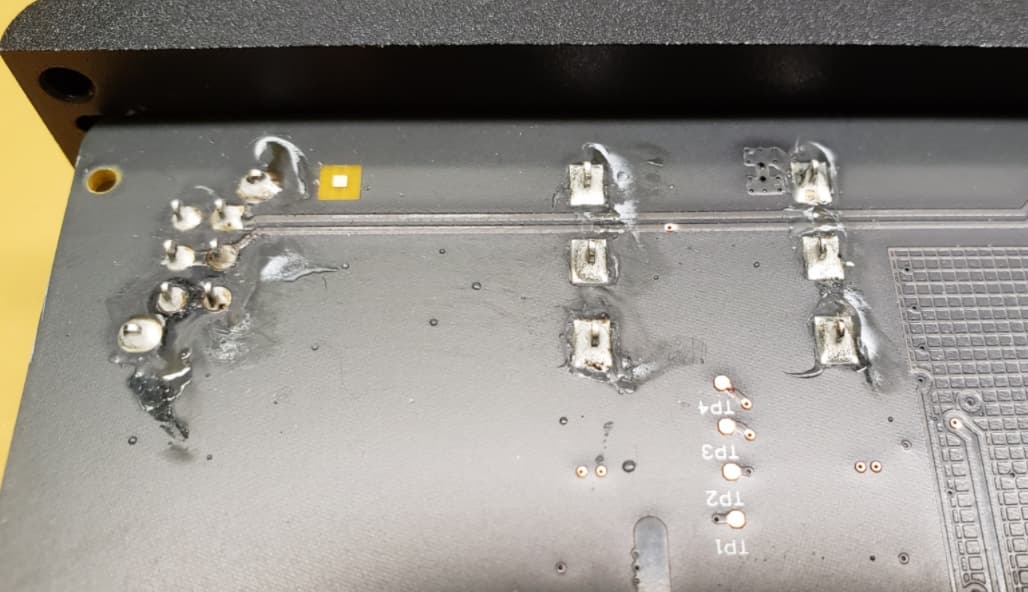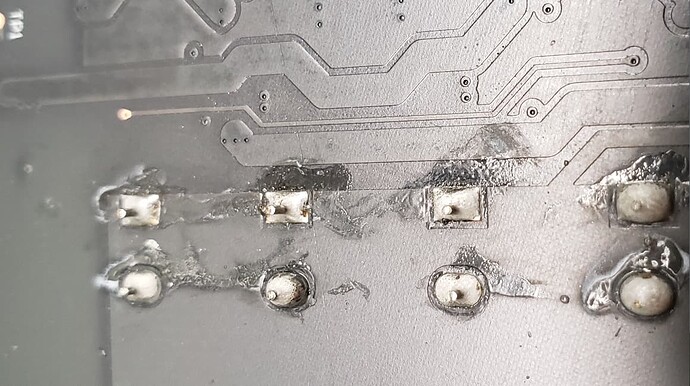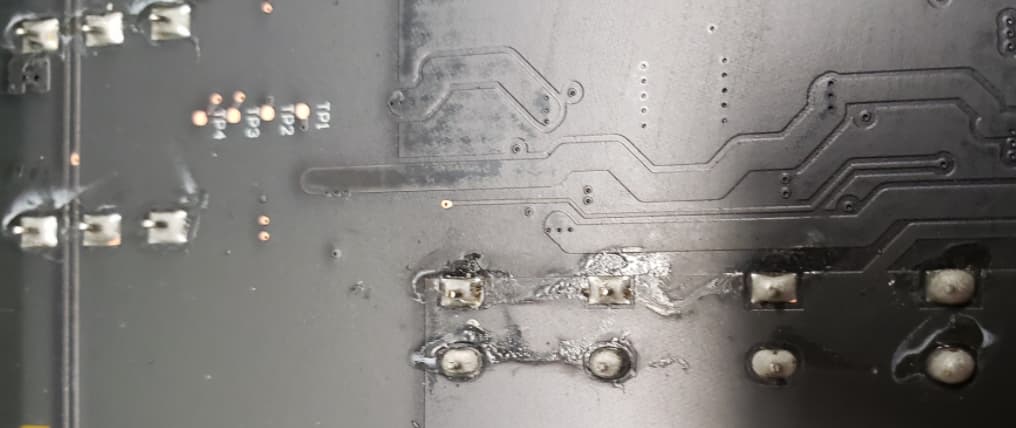I have been in this hobby for a long time and I really enjoy great musical reproduction. When it’s done well it makes me smile a lot and I get lost in listening…well recently I had a purchase that makes this feeling and experience happen a lot!
I had 24 amps in house at one time last year and am down to 10 at the moment, and am selling a few so it will go down to 5 - 6. Being an electrical engineering type I have fallen in love with amplifiers and their design and performance. The most important thing with an amp is its ability to amplify without getting in the way of those analog audio signals.
There are many really great choices for headphone amplifiers out there from $99 to thousands of dollars. All pretty good, some more so than others for various reasons. Perform an honest blind AB controlled level set test and it’s amazing how well they all are in comparison.
But every once in a while, an am amp comes along that measures ok, is simple, but has that “magic” that cannot be explained alone via specifications or cost.
The Pass Labs HPA-1 is one of these “rare” amps.
My HPA-1
Pass is for sure a well-known name in the industry and Nelson Pass is a “giant” in this area. There are a few of these guys around that I really admire and Nelson, Paul Klipsch, Mike Moffat, Jason Stoddard, David Hafler, Wayne Colburn etc…a long list and some are not with us anymore. But their contribution lives on. I loved the favorite word Paul Klipsch often used “bull!”……when a claim that was made that he vehemently disagreed to.
The designer of the HPA-1 is not on this list. Yet. Jam Somasundram is the man primarily behind the HPA-1. There are tons of great reviews of the HPA-1 amp, and the history of Jam and how he got to Pass Labs and the design criteria of the HPA-1. This amp is not the nice new “shiny” thing, its old. 2016 to be exact. But it has stood the test of time.
Many folks have this particular amp on their TOTL or End Game list, Steven Guttenberg has used this amp as his reference amp for years.
This experience is about the HPA-1 with my “stuff” and not a comparison against many other really good amps and those nice new shiny things that come out each month from a myriad of vendors. So, if your reading this to find out if the HPA-1 is better than your “super” amp…you can stop reading now. As Jason Stoddard often states “We dont tell you how things sound”…but “I” will give you some clues!
Nothing is perfect in audio, but the illusion at times is really good and having the HPA-1 in house I got really close to being there many times. More so than a lot of other good amps.
My “chain” (as the younger folks use of the word)…comprises of mostly REDBOOK 16 bit / 44.1khz ripped CD’s, using DbPoweramp, JRiver or Foobar 2000 in bitperfect mode. I am not a firm believer of High Res, Over or Up sampling…just good ole Redbook please…give me the bits please, just the bits…my dac is a Schiit Bifrost 2 into one of the many amps, in this case is simple SE into one of the two SE inputs of the HPA-1.
Headphones used are Focal Clears. Hedd Headphones, and MEZE Emperyeans. I also used HD600’s.
Other amps I have recently had the pleasure of listening with are a Phonitor XE, Soundaware P1, Schiit Lyr 3, Schiit Asgard 3, Schiit Jotenheim OG and Jotenheim 2, Schiit Magni 3, Schiit Hersey, ECP Audio T4, BH Crack, BH Mainline, Hagerman TUBA, Whammy, yadda, yadda, yadda.
I read all the reviews and listen to what trusted friends say or think about amps and throw all the rest of the BS out the door. The final arbiter is me and my ears. Nothing else matters.
So how can an amp that retails for $3500 not having a balanced inputs or outputs be any good? It it really worth $3500. Being a penny pincher and a DIY guy its a lot of money. Maybe not as much as a stellar mountain bike, but still $3500 is $3500.
The amp weighs 14 pounds. It’s a heavy amp compared to many other headphone amps…it’s about $250 a pound! Billet aluminum. Simple, strong, elegant look and construction! Made in the USA! I like this. A lot.
It has a simple look to it. A “HUGE” volume knob connected to a genuine ALPS pot…buttery smooth and easy to adjust and no slop at all. It calls you to “turn it!”…lol.
There is a micro-controller in the amp, and when you first turn it on the Power light blinks for 20 seconds with that nice muted “Pass Blue” color. Pass recommends having the amp warm up for an hour before serious listening or leave it on all the time 24/7 and its ready when you are.
I took the top cover off by removing 4 allen head “bolts” and took a look inside. Yes there are many professional glamour shots online but having the amp here and being able to see it in person is really awesome for a EE guy…for sure! Great parts, a very well laid out design…the electrical flow is spot on…a robust toroidal transformer (with MU metal and faraday shield), good filtering (that’s BIG caps)…, BIG heatsinks, good soldering, great wire terminations…all those things I like to see in a really high end unit…care in the build, lots of billet aluminum. Seeing the transistors mounted up off the left and right channel signal area PCB is a treat for a guy like me…all lined up perfectly, straight and in line…like they are going on a parade! (Note: I asked Pass if I could open the amp up to look inside without voiding the warranty. The answer to me was “Yes” but unplug it first!”).
Published Specifications: Class A all the way.
Gain (dB) 8 db
Frequency Response 10hz – 100k -1 dB
Output Power into 20 ohms 3500 mW
THD + Noise < 0.005 at 1V out
Out Power into 300 ohms 200 mW
Input Impedance 50K Ohm
Output Impedance < 2 ohms
Power Consumption (Watts) 23
Unit Dimension (W x D x H) (In.) 11 x 13.5 x 4
Unit Weight (LBS) 14
This amp is circa 2016. Except for the older reviews there is not much out there that speaks to this amp in recent times. But if you take the time to go back and read thru them its clear that this amp is indeed special. Pass has an established name in the audio industry, from the First Watt and the F7 has left many audio folks impressed. Yet the amp is not a Nelson Pass or Wayne Colburn design, but the new kid on the block Jam Somasundaram’s. Jam was the director of engineering for Cary Audio. They have known each other for 35 years…so IMO they have had a long time to cross pollinate ideas, theories and technology.
One thing I gleaned in researching this amp is the way PASS designs, builds and tests their stuff. They listen. They listen “often”. They are into discrete Class A products, purely analog. They are not into the “frills” just robust no-frills enclosures with a great sound above all else. Designing, building listening…over and over and over for many months. Measuring at the end. Does the design listened to so often match the numbers at the end? Building something for the sound and voicing etc. and measurements last…I like this.
It’s not a shiny or delicate object. Its built to last. Billet aluminum enclosure, the front plate is 1/2 thick solid aluminum. Does this make it sound any better? No. But it’s really cool. LOL. The unit is in this heavy aluminum “box” bolted together with hex head “bolts”. It’s a classic Pass look. It’s an industrial in your face look that screams “USE ME!”…all the time 24/7. And that’s Pass’s recommendation in the manual… leave on 24/7. Why? Warm up, stability, best performance, ready when you are for the best usage. That said I asked Pass if its ok to turn it off when done listening. The answer was “yes”…it’s more of a convince thing to be ready for listening anytime. Still an hour or so of warm up is recommended before any serious listening.
It’s an “exceptional” solidly built box. Period.
The buttons on the front are three. Clicky. Input 1, Input 2, Preamp. A Power on led or diode is directly above the Input 1 Led. All “Pass” blue.
A 1/4 or 6.3mm Neutrik input jack is to the right of these with the “PASS” logo CNC milled into the front panel. No 4- pin XLR, 3 pin XLR, 3.5mm, Aux etc… nope…just that one solitary 1/4 hole. Must be telling us something? Wonder if we are listening?
Oh, by the way some have stated they don’t like the 1/4 jack…well it’s the same jack you find on Gibson’s Les Paul guitar…and technically there is a reason for this particular jack being used as well. Again, a small point of design that was not overlooked.
The rear is as simple. Less “Pass Glitzy”. ON/ OFF switch in an integrated IEC power assembly with a fuse, which is self-replaceable. One set of RCA outputs for the preamp, and lastly two RCA inputs. No balanced. Simple. The bottom has four aluminum feet with rubber washers. The whole box is anodized.
Why do I take the time to discuss the box? Its build? Because with a Pass HPA-1 you’re not just buying an amplifier, it’s a structure. A very well-built structure that is well above many other boxes out there…and yes you’re paying for this, a lot. You’re paying for a year of design and test. You’re paying for excellence, all over. It’s like a family heirloom. And oh, by the way the best part of this “structure” is inside!! A great home for a great amplifier circuit.
I am a purist. I like simple well-built and well performing stuff, especially in audio. For me this amp was always there on the radar. It fits my audio goals.
Totally analogue, nothing attached to the digital world. (there is a micro-controller but not in the audio chain). The goal was to operate all the time reliably. To sound as good as possible. To basically drive any headphone load across a broad range of loads. Voltage. Current.
It’s the first Pass headphone product. It’s also the lowest cost Pass amp! An added benefit for some is a world class pre-amp, that is not an afterthought or simple tap off etc…I don’t use this part of the unit. Maybe someday.
Ok so attach the power cord. It’s a huge power cable. Gosh really nothing wimpy about this unit. Big and stiff cord. Attach inputs. Turn on. The amp starts in a mute state. Blue power light blinks on and off for approx. 20 seconds. Press one of the INPUT buttons or Pre-amp. Plug in cans, press play, turn that BIG knob…and “Smile”.
So what’s the design all about. Well it’s a fully discrete design. Using discrete transistors, resistors, capacitors etc…look at the pictures. You will see one op-amp in the unit but it’s a DC servo. This is a direct coupled amp. Low feedback. The power transformer is a beast. It took a few tries to get this the way they wanted it to be, low noise, toroidal with care for keeping the AC isolated from the other circuits, with MU metal and a faraday cage. 40,000 uf in filtering caps on to discrete voltage regulators. All on their BIG individual heat sinks. The choice of “type” of components in this amp was very well thought out. To someone that likes circuits and is not just an “appliance” operator this is special and important to me. Toshiba J-Fets in the input stage. This is the “voltage” gain part. Fairchilds Mosfets in the “direct” coupled Class A output stage. This is the “current” drive part. A real ALPS pot. A large pcb with all the stuff soldered well to it. Clean layout. Labeled very well.
Ok let’s talk sound and performance.
One thing I found using this amplifier is that it made every headphone I plugged into it “work” better. It has the uncanny ability to bring out the very best of any transducer you use with it. Its worthy of any TOTL headphone. Many reviewers have used Focal Utopias, LCD4’s, Abyss etc… with spectacular success. With my Focal Clears, Hedds, and Meze Empyreans it was nothing but stellar each and every listening session. The Hedds were the hardest to drive “spec” wise, but the HPA-1 easily drove them very well.
It makes listening a totally new experience. Slam, fast transients…no audible distortion…bass that is excellent, extremely well controlled. It draws one into the performances and nothing is left unheard. Good or bad. There is this sense of personal connection with the music. It’s addictive, and I found myself wanting to just listen and not wanting to stop!
The sound, the ambience in recordings, the reverberations in a concert hall, or recording studio are readily apparent. Excellent resolution, exquisite details. The ability to really hear what the recording was originally all about with good headphones is there in spades. Dead silent background. Thunderous bass, with body and soul. Fat juicy musical notes just jump out at you… often quite shocking how well they are displayed in your “ears” and brain!
Many amps are good, some really good, and others are above and beyond. With the HPA-1 you’re in the above and beyond category all the time. It’s easy to have your expectations dashed with great claims when that new shiny object lets you down. You sell it and move on. The HPA-1 is one of those rare audio devices that really lives up to the hype. And really there wasn’t a lot of hype around it. It was just the first foray into a headphone amp by a company that likes simple clean discrete designs… that often lead to excellence. This amp is excellence.
I got this from Desmond at Pass: “We like simple clean designs and they tend to work better.” Indeed.
There is a fluidity of sound that flows from good recordings…makes you feel like the presentation is above the ordinary… it’s very clean, very accurate, very precise, but so musical…a SS kind of euphony…Sound that comes out from a inky black silent background…just wonderful.
Many reviewers have just simply stated “Spoiler Alert - this is among the best heaphone amps I’ve ever encountered”. And I totally concur. It’s that good.
Even though this amp was not directly designed by Pass himself it meets all the Pass design criteria, build goals, simplicity and this amp did not get out the door without “poppa pass’s” blessing. After all its his name that is machined into that front panel!
Some interesting quotes from the designer Jam Somasundram:
“The HP-1 was designed more like a small power amplifier than a traditional headphone amplifier. It will drive headphones that have impedance ranging from 15 to 600 ohms (which is a conflicting set of requirements for a good design). To overcome this, we had to use relatively high supply rails as well as a high bias. (Note the rails are 24 volts).
The amplifier uses a complementary topology with a cascoded J-Fet input stage and a Mosfet output stage. The design is fully discreet and uses very small amount of feedback and has a wide bandwidth.
The output stage is biased into Class A for more linear operation and improved distortion characteristics.
The transformer has been custom designed for the HPA-1. It is a toroid that is rated at over three times of what is required for the circuit and has a Faraday shield built in as well as magnetic shielding around the circumference of the unit, to reduce noise. We had to go through several prototypes before we came up with one that met our requirements. Contrary to popular belief, transformers can make a huge difference.
The importance of the power supply cannot be ignored in a good design and to this end, the regulator is composed of discreet components and is a very low noise design with over 40,000 uF of capacitance with local decoupling for each channel.
Switching and mute functions are controlled by a custom programmed micro-controller.
We have left out any unnecessary features that we deemed would compromise the sonic performance of the unit; less can sometimes be more.”
“The unit is designed to stay on at all times. The power switch is located in the rear.
When the power is turned on the unit goes into a mute state for twenty seconds. This is done to allow the circuitry to stabilize. During this period, no functions are available, and the power led will flash. When the unit goes out of mute into operate mode the power led will stop flashing and stay on.
The amp has two inputs that can be selected from the front panel.
The unit also has a pre-amp function, which is selected from the button on the front panel. When the pre-amp function is engaged, the headphone output is disconnected — only one output (either headphone or pre-amp) is available at any one time. This is done as a safety feature.
The unit gets to optimum performance about one hour after turn on. In the event of a power loss, the unit shuts off, and upon restoration of power the unit will go through the mute cycle and return to the state it was in prior to the loss of power. It will remember the last input and function and will return to that setting. This is also true when the unit is switched off with the power switch.
Finally I suggest you try the unit as a pre-amp, we believe it will hold its own against products which cost much more.”
Q: Is there any area about the HPA-1 which you feel could have been improved if cost was no object? It’s already quite expensive as headphone amps go but is there anything that was “held back” for any reason?
A: If cost were no object I suppose we could improve the power supply further, or use a dual mono version, all of which I have tried with minimum improvement. Sometimes added complexity can work against you. If you look at the price/performance curve, I think we are in a pretty good spot.
Q: Similar to question 1, is there any design aspect or parts implementation that would have been used if there wasn’t any regard for realistic manufacturing processes etc? I know the DIY community does some crazy stuff that wouldn’t be tenable for a company to build even in modest numbers.
A: I actually tried some crazy stuff (ideas) in the design but only used them if they worked. Parts were chosen for the best performance, and we found that some audiophile (boutique) rated components actually hurt the sound. We tested the amplifier with a wide variety of headphones to check that we were not missing anything. Also, reliability plays a key role in a product like ours, and you do not want to skirt too close to the edge.
Q: Are there any similarities to any of the existing Pass models? I’m not referring to general similarities like low feedback but rather specifics…. was anything borrowed or inspired heavily from any portion of another Pass product? I guess I’m trying to clarify if this is a complete “ground up” design.
A: The design is quite different from existing Pass models, primarily because of the requirements of a headphone amplifier as I mentioned in my other e-mail. This is a totally ground up design, we might use similar parts but the topology is completely different.
Q: I like your comment on voicing. Can you explain in your words the difference between “design” and “voicing”?
A: I would say design is the basic topology/circuit used in the product that works and meets your basic objectives. Voicing is the tricky part which includes for example your choice of components, amount of feedback, and biasing, among others. In my opinion voicing can make the difference between a good or acceptable product and a great one. On the other hand, voicing is not going to help a bad design.
Q: Also related to the above question: as you know, some of the more objectivist designers’ frown on the term voicing… I suspect you understand their point of view but simply disagree, so where do you think they go wrong?
A: A long time ago I thought that specifications were everything, but quickly learned that there are some things in audio that can’t be easily quantified, or qualified for that matter. Specifications should be used as a guide, and if higher distortion means a better sound then you have to make a choice…. Of course, some sort of balance has to be struck.
For example, if distortion was the main criteria for the quality of an amplifier, no one would own tube amplifiers. Things like Yamaha receivers would rule the day. In my opinion the technical aspect of a design is only part of the equation, and the rest is an art form. I am not stuck in any design camp, which I find can be counterproductive. For example, the no-feedback idea — you have to use elements that work for your design, otherwise you can paint yourself into a corner with the end result being a handicapped product.
We at Pass Labs listen extensively to everything we manufacture and the process is quite lengthy. Our main ideal is that no product should be released before it’s time.”
So for me in conclusion this is the “best” amp I have ever used or heard for that almost perfect goal of a “realistic” audio performance with great headphones. Its indeed a TOTL or End Game amp for many and especially for me.
I bought this amp and have no intentions of selling it!
If you can get ahold of one, give it a try. You might like it. A lot.
Alex
Final Pix:
All the Pass has to offer to date for Headphone addicts…HPA-1 and the Wayne Colburn Whammy!
Made in the USA by Pass and “Me”.
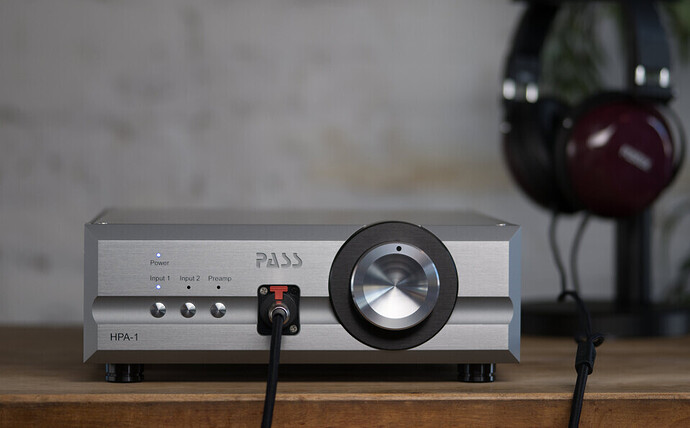
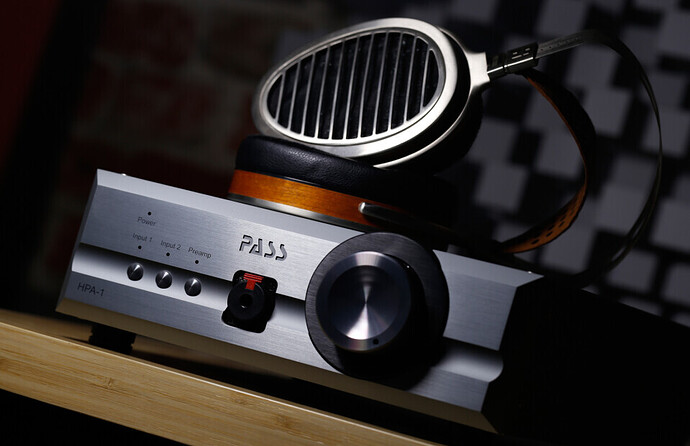
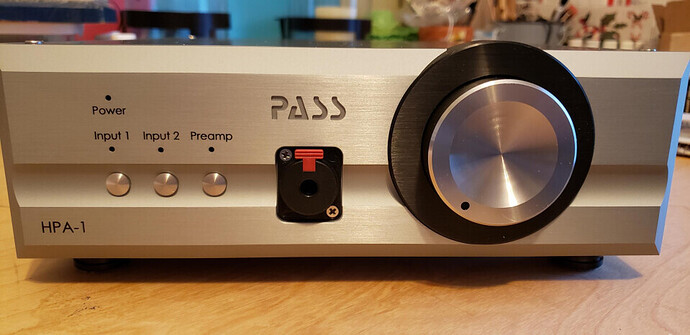

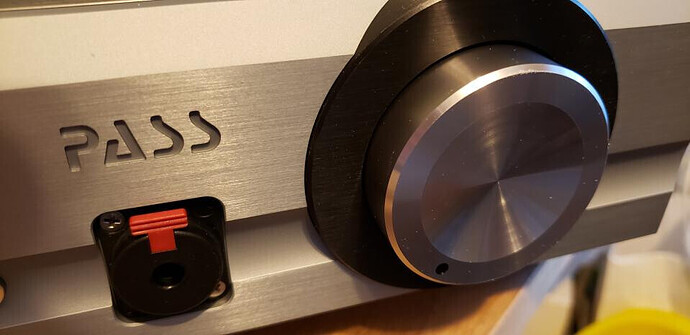
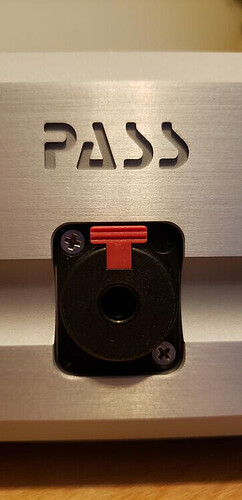
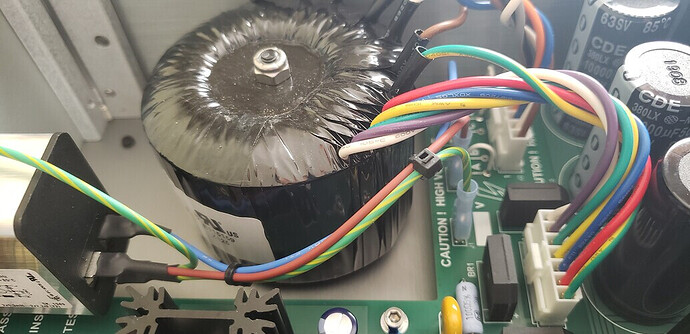
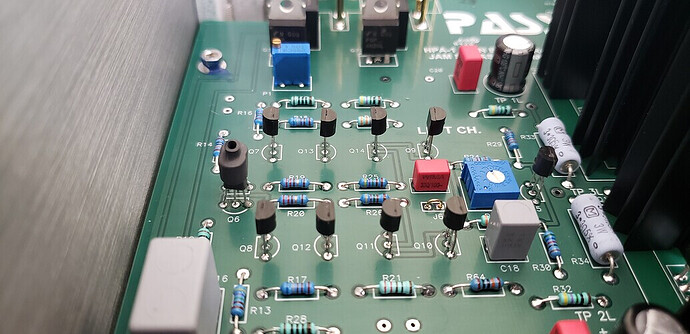

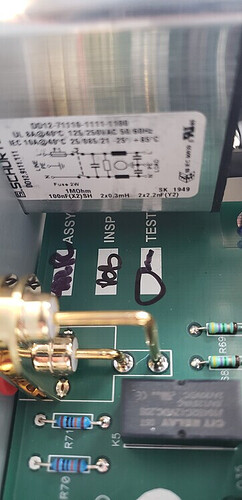
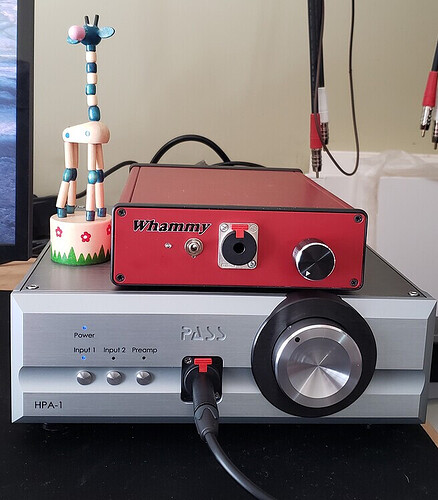
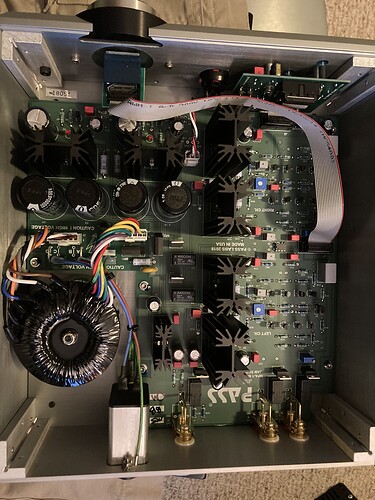
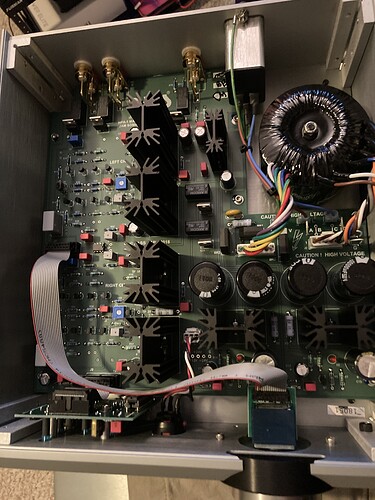
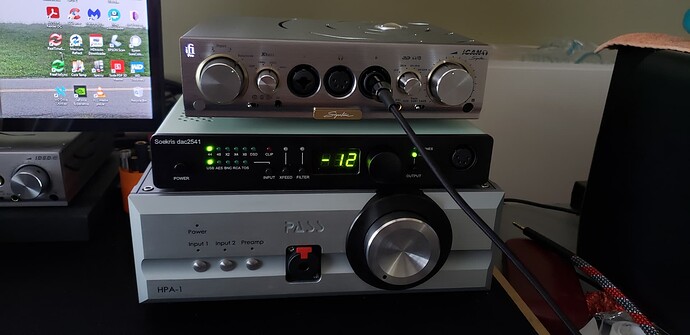
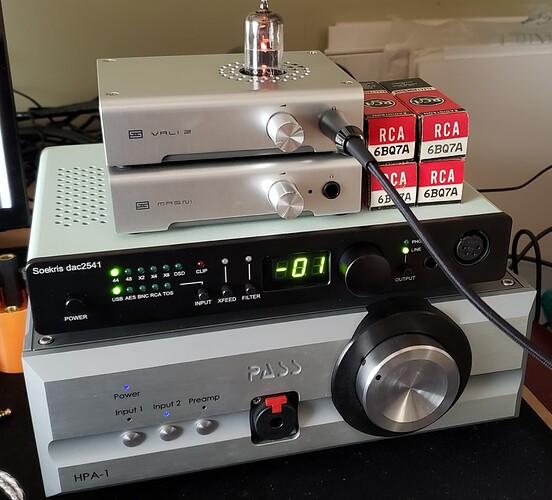


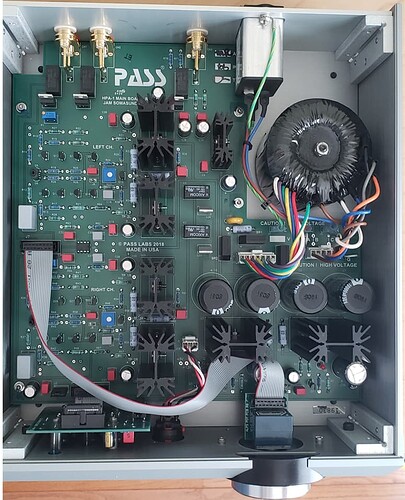


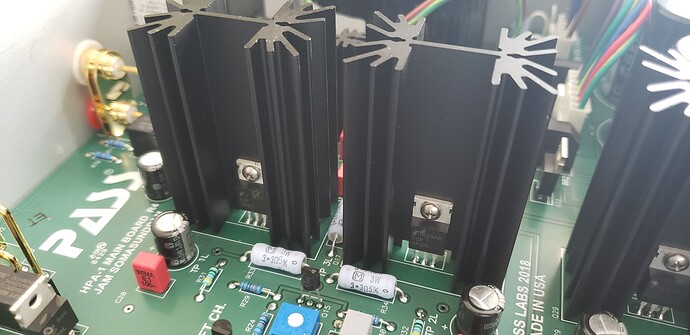
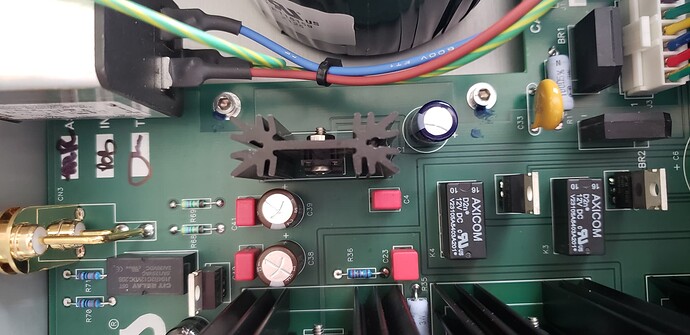


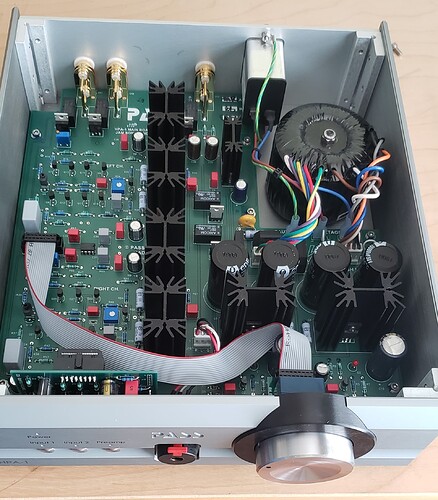
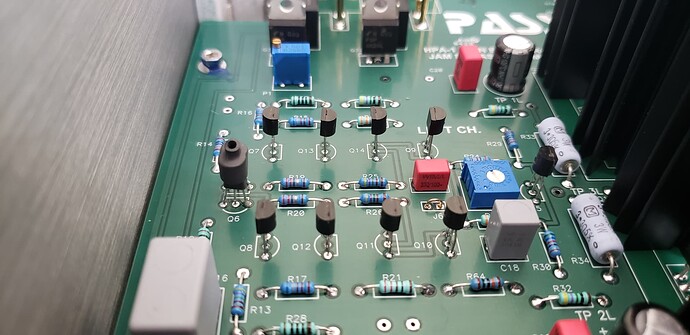
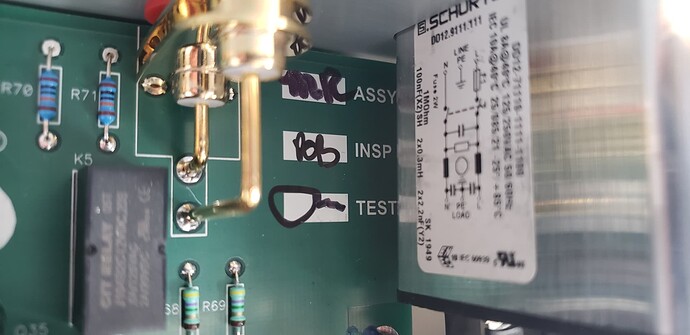
 Oh well.
Oh well. 